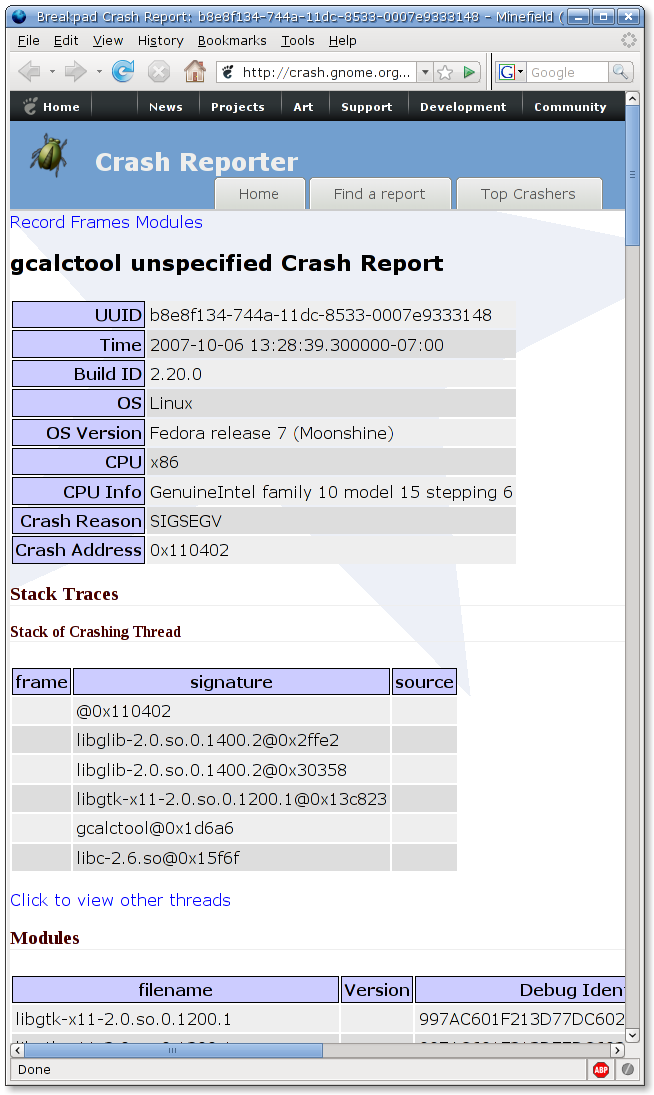Fernando Herrera released Bug-Buddy 2.20.1. In this version he added support for submitting crashreports to the GNOME Socorro server. The web frontend for this is available at: http://crash.gnome.org/. Note: it currently redirects to port 5000. However, I’ll change that soon to only allow access from normal port 80; port 5000 will be firewalled again.
This work is all very recent, it requires a bit of work. Stuff that needs doing (by Fernando, you or me):
- I quickly made the web frontend look more like a GNOME site. However, needs finishing.
- Finish up the installation instructions. Probably need to ask Fer to add the stuff he did.
- Add scripts to download the -debug packages for Fedora, see if they are linked against GTK+, or libglib in case of libs and store the symbols. Later goal is to expand for other distributions. However, ideally (when everything works well enough), it would be best if distributions could host their own server.
- Ensure everything will work well enough to allow distributions to host their own Socorro servers. This can be done already, but there aren’t even example scripts yet to parse -debug packages (AFAIK, maybe Fer has something).
- Somehow a crash report needs to be forwarded to GNOME Bugzilla. Hopefully Fer has an idea (mainly about how to determine a new crasher and ensure it was not reported already to Bugzilla)
Screenshot:

Because bug-buddy in 2.20 is activated as a GTK module, it will now see crashes from all GTK+ applications. This even if they do not link against libgnome. Ideally we should get these crashreports to the developers/maintainers of these apps. This is related to ensuring that when a server is run by a distribution we will still be able to see the crashreports. There should be something generic enough to either push the top crashers to a project or some kind of pull system (current web interface seems a bit simple).
Note: Fer added DWARF2 to Socorro/Breakpad. However, that was added by hacking in some GPL’d code. This cannot be merged upstream as they use some other license. The GNOME version of this is available as the socorro module in svn.gnome.org.
Since the availability of debug packages, people have requested Bug-Buddy to install them. However, with the loads of different package formats/frontends this wasn’t easy to solve (although work is being done to solve this). Further, the debug packages are usually very big in size. Really nice to have a better solution. Thanks Fer!

